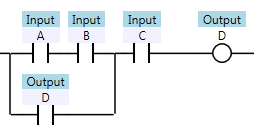A couple weeks ago I wrote a post about budgets, and Ken from over at Robot Shift replied:
My experience when compensation is set up to be win-win it’s a good thing. If someone’s working hard, and doing the right things often their impact far exceeds that of just their hourly contribution. It impacts teams, groups and profitability. If the organization profits from this impact, the employee should as well.
On the surface I think that’s true – we all appreciate profit sharing, but I think Ken’s talking about performance-metric-based-pay. I don’t agree with tying creative work to performance pay. The inner workings of the human mind continue to astound us. An article in New Scientist says:
…it may come as a shock to many to learn that a large and growing body of evidence suggests that in many circumstances, paying for results can actually make people perform badly, and that the more you pay, the worse they perform.
“In many circumstances” – I’m going to talk about one such circumstance shortly. Of course for more surprising information there’s the classic Dan Pink on the surprising science of motivation, and Clay Shirky’s talk on Human Motivation.
There’s a big difference between intrinsic motivation and extrinsic motivation. If you have to choose, intrinsic motivation is more powerful. It costs less, and it’s a stronger motive force. I believe that’s due to the phenomenon of “flow“. If you work in any type of creative field, you know the power of flow – that feeling you get when you’re 100% immersed in your work, the outside world seems to drift away, you lose track of time, but you’re incredibly productive. Without distractions you can focus your full attention on solving the problem at hand. Once you’ve experienced this a few times, it’s like a drug.
For someone like me, assuming I make enough money to pay the bills, I would trade any additional money to spend more time in “flow”. Yes, I’m Scott Whitlock and I’m addicted to flow. (I’m not the only one.) If you have one of those lucky days where you spend a full 8 hours without distractions, wrestling with big problems, you’ll come home mentally exhausted but exhilarated. At night you truly enjoy your family time, not because your job sucks and family time is an escape, but because you’re content. The next morning you’re excited on your drive to work. Your life has balance.
Paul Graham wrote an excellent essay about the Maker’s Schedule, Manager’s Schedule. The Maker blocks out their time in 4 hour chunks because they need to get into “flow” to do their best work. Managers, on the other hand, schedule their days in 30 or 60 minute chunks.
Do you see the problem? If a Manager never experiences flow then they can’t understand what motivates their Makers. That’s why management keeps pushing incentive pay: a lot of Managers are extrinsically motivated and they can’t get inside the head of someone who isn’t.
In case you happen to be a Manager, I feel it’s my duty to help you understand. It’s like this: if you’re addicted to flow, then being a Maker is an end in itself. If you still don’t get it, please read the story of The Fisherman and the Businessman. Ok, got it? Good.
So, if you’re managing people who are intrinsically motivated, here’s how you should setup their pay:
- Make sure their salary or wage is competitive. If it’s not, they’ll feel cheated and resentful.
- Profit sharing is ok if you don’t tell them how you arrived at the numbers.
Yeah, that’s crazy isn’t it? But it’s true. Do you want to know why? I’ve spent most of my career paid a straight wage without incentive pay. I did get bonuses, but they were just offered to me as, “good work this year, here’s X dollars, we hope you’re happy here, thanks very much.” Under that scheme when someone came to me with a problem, I relished the challenge. I dove into the problem, made sure I fully understood it, found the root cause and fixed it. The result was happy customers and higher quality work.
For a short time I was bullied into accepting performance-based pay. My metrics were “project gross margin” and “percent billable hours vs. target”. Then when someone came to me with a problem unrelated to my current project, my first reaction was “this is a distraction — I’m not being measured on this criteria.” When I paused to help a co-worker on another team for half an hour on their project, my boss reminded me that I wasn’t helping our team’s metrics. My demeanor with customers seemed to change. Work that used to seem challenging became extremely stressful. I lost all intrinsic motivation. I was no longer working to help the customer – I was working to screw the customer out of more money. It was as if, by dangling the carrot in front of my nose, I could no longer see the garden.
It’s hard for me to admit that. When you’re intrinsically motivated, you’re proud of it. It makes you feel good to do the work for its own sake. For Makers, doing work for performance pay is a hollow substitute. It demoralizes you.
I guess my point is, if you manage Makers, how do you not know this? It’s your job!
